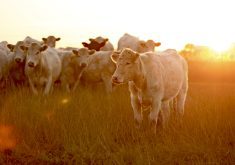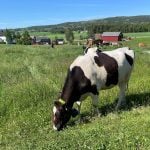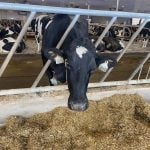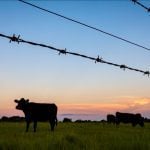If you don’t do the homework, your field day or open house private treaty sales might be the beef producer’s equivalent of throwing a party and nobody coming. However, if you plan well in advance, you could extend your hospitality to an entirely new group of customers, plus show your appreciation to your long-standing ones.
Give your customers an event
Travis Olson of Ole Farms at Athabasca, Alta., suggests planning an event that has selling cattle as only a part of it. “It would be almost an afterthought — ‘Oh, by the way, we have quality Angus bulls for sale,’” he says.
Read Also
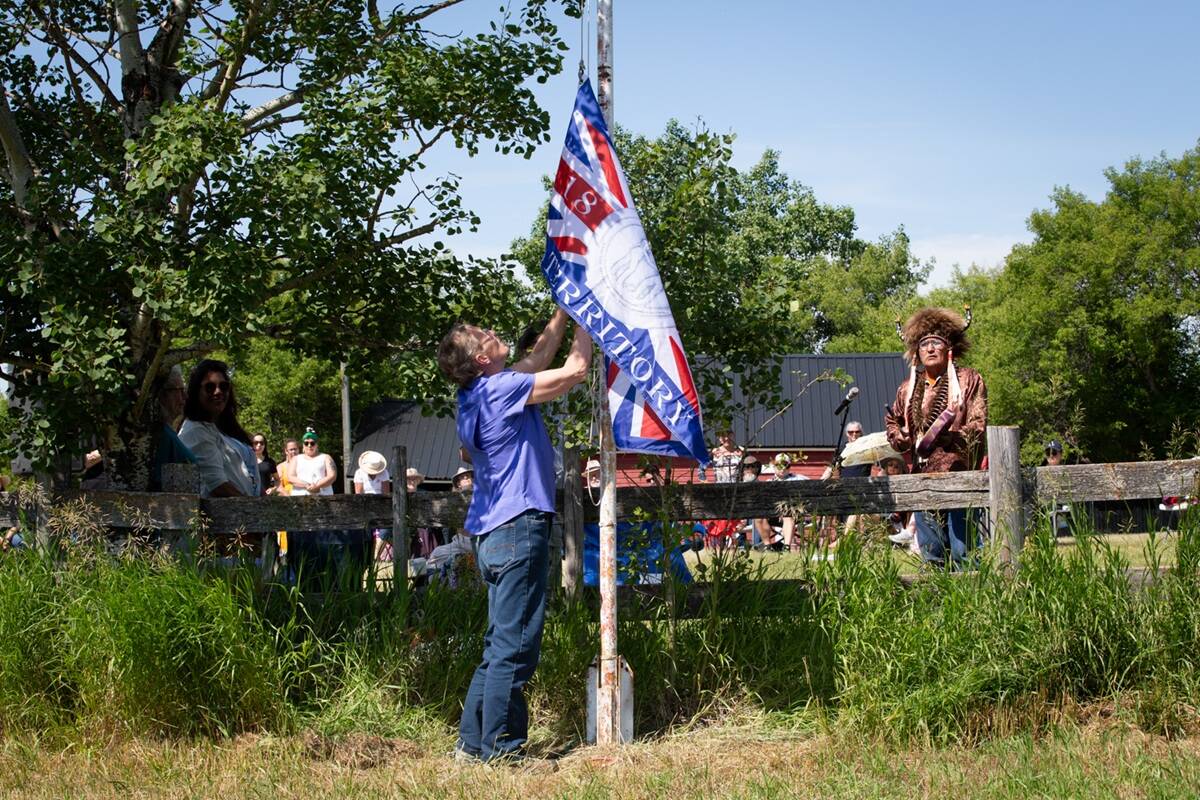
Treaty Land Sharing Network expands reach in Saskatchewan and Alberta
The Treaty Land Sharing Network, which connects land holders with First Nations and Metis people, has expanded since it began in 2018
Olson (soon to be of Olson Ranches as he restructures), says a guest speaker on a relevant topic might be in order. Bring in a notable expert on summer forages, cattle nutrition or pasture management. A welcome, an introduction, a speech, a question/answer session and a wrap-up will fill an hour, he says.
He says provincial beef specialists are often seeking an opportunity to present new research or other information. However, don’t overlook the local experts either: an auction market operator, a successful area rancher or “somebody who is just doing something in a unique way,” Olson says.
These guests are usually available at no charge, or for a modest honorarium. “Always offer to help pay for their transportation costs though.”
Olson says the staging could be as simple as an out-of-season calving barn, half of a machine shed or even a corner of your farm shop. Just add chairs or benches and a lectern, he says. “It doesn’t have to be fancy.”
Social media contacts and advertising
Nerbas Bros. Angus at Shellmouth, Man., sell bulls by private treaty and have for 15 years. They have never held a bull auction sale. They market about 65 bulls annually, mainly into the four western provinces. However, they also have sold bulls into Ontario, Quebec, Minnesota and North Dakota.
Arron Nerbas, together with his brother Shane and their parents, begin sales the first week in January “when we announce the bulls are in groups and ready for viewing,” he says. “It’s a first-come, first-serve basis.” Their selling lasts until about May 1, which is also when they begin delivery.
“I can only imagine my fuel costs for this spring,” Nerbas laughs.
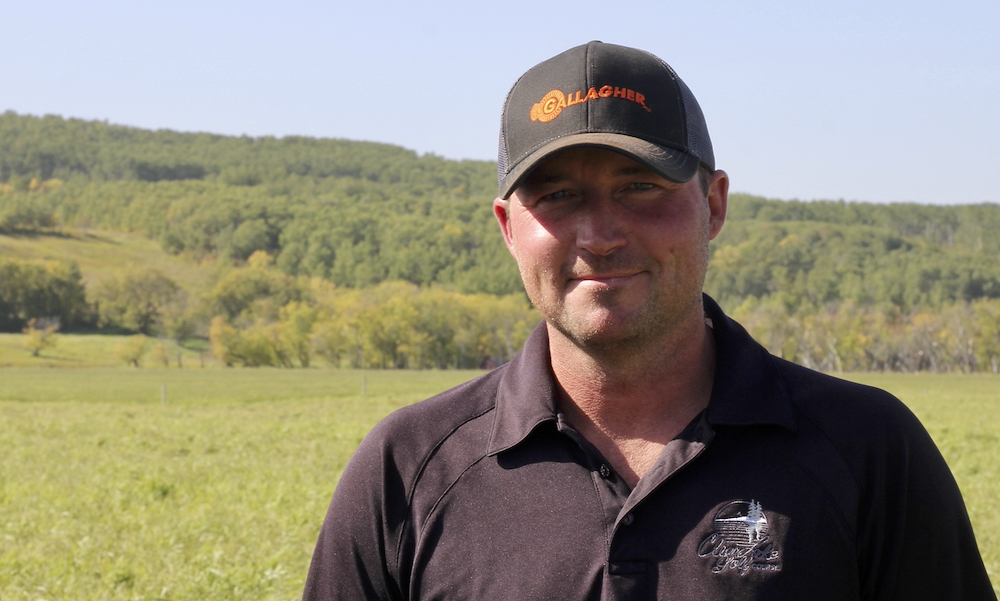
Nerbas used to stage a one-day open house private treaty bull sale on March 17, but says they’ve been trending to selling earlier every year. In early March, he guessed they had sold two-thirds of their two-year-old bull inventory. They do not sell yearlings.
To attract people to their yard, Nerbas says they use social media, namely Twitter and Facebook. “We ‘drive’ people to our website where there is more information.”
He says they have also compiled 200 previous and potential bull buyers in a database. They regularly communicate with them through email blasts using MailChimp.
Nerbas says they also use high circulation farm and beef publications to attract new buyers. “We have a niche market of a more maternal-based herd,” he says. They calve out 550 cows and heifers, with the majority being commercial females.
Use your location advantages
Robert Schwaluk lives adjacent to the Yellowhead Highway at Shoal Lake, Man. He sells his Angus bulls using signage right along the well-travelled highway.
Schwaluk’s sign is bold and simple: “Big Black Bulls for Sale” and then his phone number. Travellers can view it from either direction. Manitoba Highways data suggests 2,000 vehicles pass by that stretch of the Yellowhead every day.
He sold 11 yearling bulls in 2021. Schwaluk’s only advertising was his huge sign.
Domestic and worldwide sales
Gary Kiziak of Codiak Acres at Ardrossan, Alta., sells about 20 Speckle Park bulls each year at his on-yard bull auction sale. Before the end-of-March Saturday sale though, he hosts two open house days immediately before sale day.
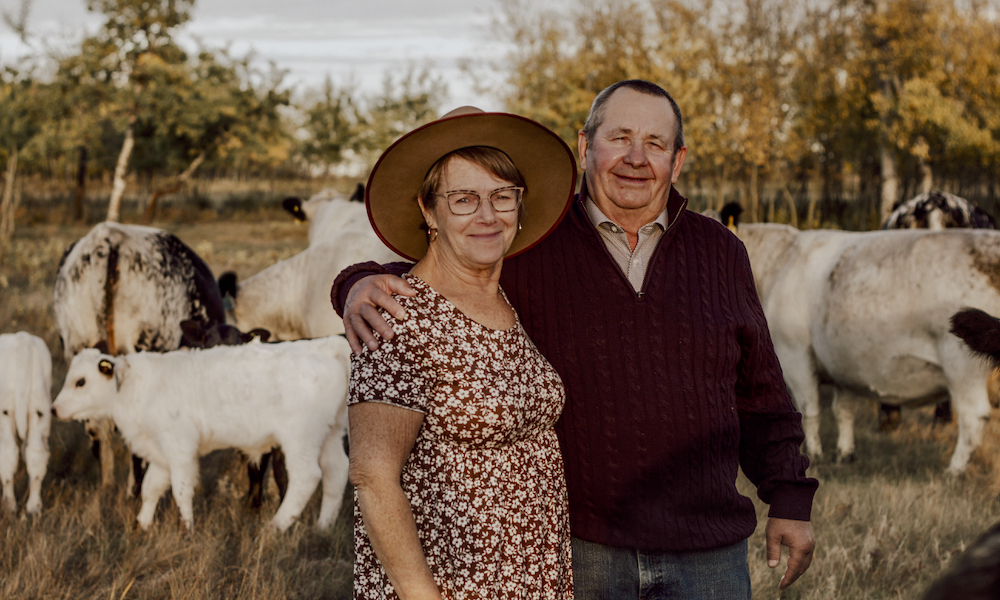
Doing it this way means people have a choice of days and can look at the bulls at a more leisurely pace, Kiziak says. He stops selling bulls privately on December 31 to hold them for the sale.
For Kiziak, he prepares a sale catalogue and gets it out to 900 producers on his private list. “That’s likely our biggest expense,” he notes. Kiziak generated his list from hosting 13 sales and from 32 years in the business. Besides print advertising, he uses social media such as Facebook to generate interest in his cattle.
This year he’ll sell 18 bulls at his private treaty sale, along with some extra bulls from two guest consignors.
Kiziak’s main advice for getting people into the yard is to stand behind everything you sell. “If it doesn’t work, bring it back.”
That’s so important, Kiziak says. “Sometimes things just don’t work out with a purchase.”
In October he stages a similar female sale with Barry Dutcherer of Neilburg, Sask. Kiziak markets about 800 embryos annually, many of them overseas. Currently, he notes demand in places like Australia, New Zealand, Brazil and the British Isles. “I have 17 of my best cows being flushed right now.”
Thanks – I’ll have an auction
Darryl Shuttleworth of Charworth Charolais Farms, Balzac, Alta., sells about 40 bulls annually, but few by private treaty. He and his family have been part of a sale for 40+ years. In 2021, he and a co-consignor had the second-largest Charolais bull sale in Canada with 121 head auctioned off.
“I just don’t have a lot of time to host buyers on the yard every few days,” he says. However, he does welcome visitors. Shuttleworth calves out 180 purebred females in January and February, plus he grain farms almost 5,000 acres.
“I just like the idea of getting most of the selling done in one day,” Shuttleworth says.
Avoid seller and bull stress
Elsie and Leonard Beddoes at Wardlow, Alta., sell 15 South Devon bulls annually (mainly yearlings) through a private treaty offering. They have a purebred herd of 50 females, plus they run 150 commercial cows.
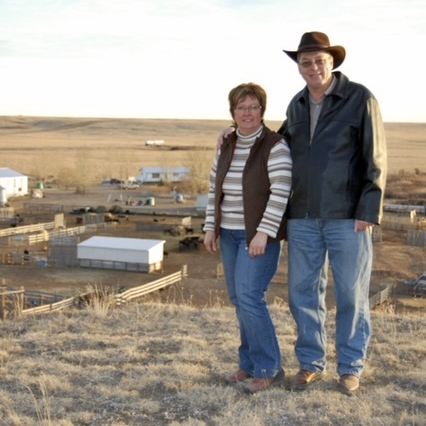
“We found the auction sales to be costly and stressful,” she says. They’ve had South Devons since the early 1990s.
Buyers come to their yard seeking bulls mainly through word-of-mouth, beef magazines, and local advertising and through websites like Kijiji. They’ve sold bulls across Alberta, Saskatchewan and B.C., Beddoes says. “We’re pleased to have so many repeat customers too.”
In the middle of February, the Beddoes sort through their bulls in preparation for offering private treaty sales. “We’re kind of homebound in March and April with our calving anyways,” she adds.
Switched back to private treaty
“We had a mid-April bull sale for a few years and then we went back to selling off the yard,” says Mitch Stuart of Stuart Cattle Station, Edam, Sask.
Much of that decision was prompted by COVID-19 rules whereby the government mandated only 10 people at public events, he says.
Mitch and his wife Melissa run 280 breeding females, 200 of which are purebred Black and Red Angus. They sell 40 bulls annually, the majority of them as yearlings.
They began the purebred herd in 1991. “We do a lot of our selling the old-fashioned way,” Stuart says. “We like repeat customers.”
To find new ones, they use some social media techniques. A few years ago, they also hosted a Saskatchewan Angus Tour, “and that helped a lot,” Stuart says.
Their sales begin off the yard in early January. They put together a bull listing catalogue and mail out 150 copies at Christmastime, he adds.
Competitive bidding pays
It sounds like an ad slogan. Admittedly, Scott Johnstone is biased about his auction market, slightly west of Moose Jaw, Sask., visible along the Trans-Canada Highway. “Competitive bidding gives you a price bonus,” he says.
Johnstone, his dad, Wayne, and his deceased grandfather, Lloyd, started in the beef bull-selling business when they began the market in 1968. He hosts and handles a dozen bull sales annually, he figures. “I have nothing against private treaty sales, though.”
Besides prices, Johnstone lists other factors in favour of the bidding process. At an auctio “you get the same chance as other buyers to choose a top bull,” he says. “They aren’t picked over.”
Johnstone also says the auction markets in general are easy to find, comfortable and predictable. Occasionally, with on-farm sales, “buyers will say they’re going to come, but don’t show up,” he notes. “Or buyers arrive, choose bulls and then change their minds a few weeks later.” That doesn’t happen at auctions, he says. “Bull sellers’ time is valuable too.”
Even worse, Johnstone says, is the sparring over prices on the yard. “We take care of that quibbling right here on sale day.”
Auction markets are a familiar setting, Johnstone adds. “Some buyers sit in the same spot every time they come in,” he says, laughing. “It’s like their church pew.”
Hustle and rustle up people
Ultimately, Travis Olson says his best tactic is to phone his own list of previous customers and attendees.
“I know it’s hard work, but there’s nothing like that personal contact to invite people out,” he says. “Seek to build relationships.”
Mark Kihn is an original farm boy from Basswood, Man. He is the former editor/publisher of the Charolais Banner. Kihn writes out of Calgary.




